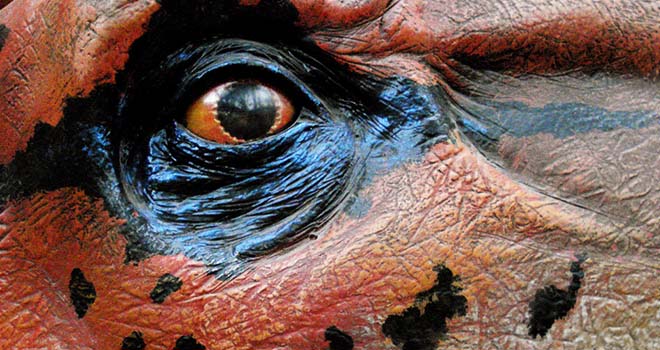How volcanoes finished off the dinosaurs
It is widely believed that a big asteroid is what led to the mass extinction of the dinosaurs 66 million years ago, and new research suggests volcanic activity also played a role.
Their findings indicate that the ongoing, slower-placed eruptions at the Deccan Traps doubled in output within 50,000 years of the Chicxulub impact.
Scientists have been debating for over three decades about the possible reasons behind extinction of dinosaurs and every time the discussion came up, one faction of researchers claimed that only the asteroid was to blame while others blamed the volcanoes. “The scenario we are suggesting-that the impact triggered the volcanism-does in fact reconcile what had previously appeared to be an unimaginable coincidence”. The dating shows that the lava began spreading before the asteroid impact.
The Deccan eruptions lasted 420,000 years after the asteroid and extruded enough lava to cover the continental United States 600 feet (180 meters) deep.
About 65 million years ago, the dinosaurs went extinct. At the same time, the sulphate aerosols may have blocked the sunlight, leaving the Earth in complete darkness and as a result, it might have caused a global cooling.
For a few 500,000 years, larger lava flows made life untenable for both dinosaurs and their successors. That is why there has got to be a link between the two, Renne says.
The asteroid impact that produced the Chicxulub Crater caused a huge seismic event that fundamentally changed the plumbing system in the Deccan volcano magma chambers.
“The time it took marine fauna and many aspects of ocean chemistry to recover back to pre-extinction values is about half a million years, which happens to be the amount of time it took the volcanism to die down”, said Professor Renne. Although eruptions happened less often, they were-on average-much larger than preimpact eruptions, Renne says, with possibly disastrous consequences for Earth’s ecosystems.
All non-avian dinosaurs and many other living species vanished from Earth at the close of the Cretaceous period, a moment geologists call the Cretaceous-Tertiary boundary, or K-T boundary for short.
In order to find the effect of volcanic eruptions, researchers traveled to India to the Deccan traps.
The Chicxulub impact – named after a town in the Yucatan – created earthquakes of magnitude 11 in the vicinity of the crater, the authors say.
“What we wanted to do was sample from bottom of the pile, the middle of the pile and top of the pile – and try and determine where, within that whole sequence, age of the impact and the extinction occurs”, Renne said.
Renee is a professor-in-residence of earth and planetary science at UC Berkeley and is also director of the Berkeley Geochronology Center.
Then they dated each sample in the lab at Berkeley, and found that the dates of the volcanic eruptions and the asteroid impact matched each other within 32,000 years – it was an “insignificant” difference, they report.
The dating work was supported by the Ann and Gordon Getty Foundation and UC Berkeley’s Esper S. Larsen Fund.








